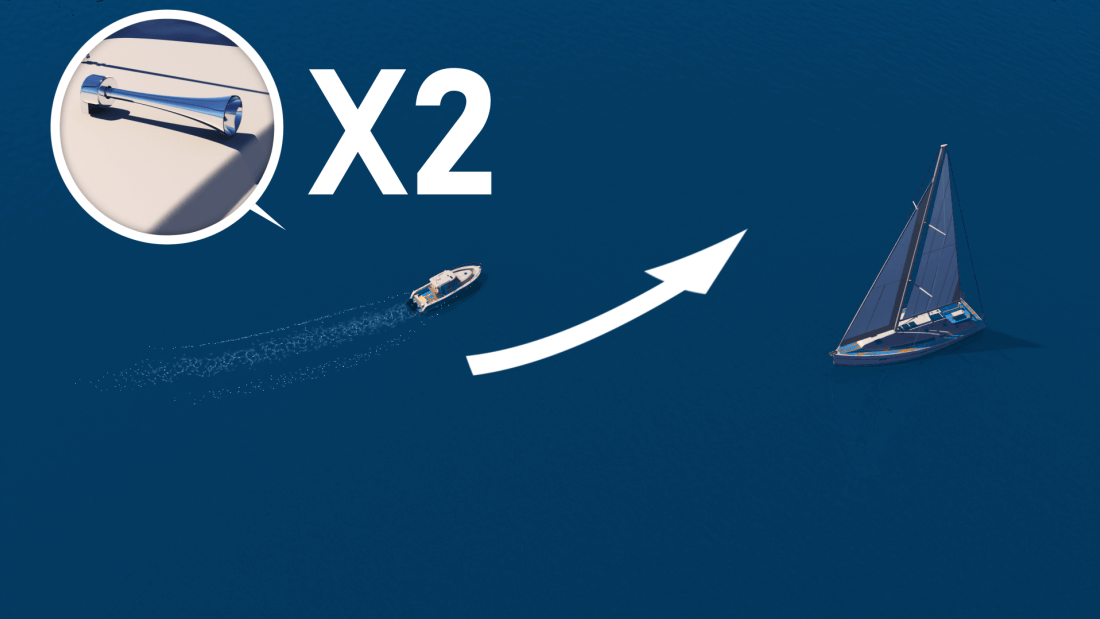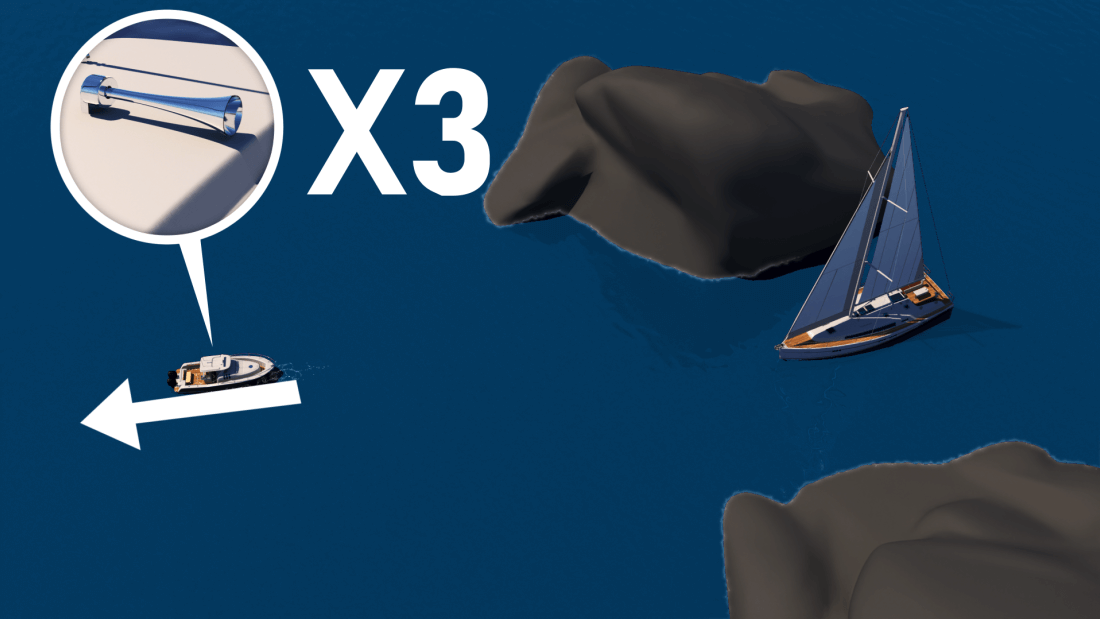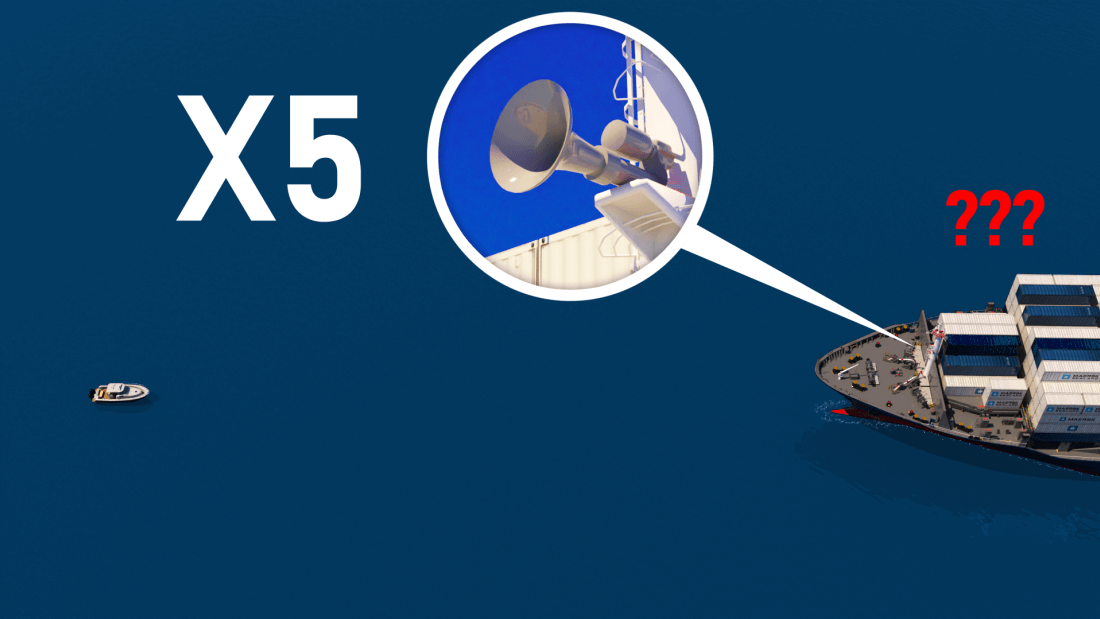When to use sound signals for boats?
What are the sound signals for boats?
Every vessel is required to carry some kind of efficient sound producing device to signal their intentions as outlined below.
Vessels are required to sound signals any time that they are in close quarters and risk of collision exists.
-
The term “short blast” means a blast of about one second.
-
The term “prolonged blast” means a blast of from four to six seconds.
What is the meaning of one short blast?
1 Short blast - I am altering my course to starboard. (Turning right)

What does 2 short blast mean?
Two short blasts - I am altering my course to port (Turning left)

What does three short blasts mean?
Three short blasts - I am operating astern propulsion (backing up).

What does five short blasts mean?
Five or more short and rapid blasts - Danger or doubt signal (I don’t understand your intent).

What does prolonged blast mean?
Restricted Visibility
Motorboats Underway:
One prolonged blast at intervals of not more than two minutes.
Sailing Vessels Underway:
One prolonged blast, plus 2 short blasts at intervals of not more than two minutes apart.
All Boat Types:
One prolonged blast is a warning signal (for example, used when coming around a blind bend or exiting a slip).
Note:
Inland rules use sound signals to indicate intent to maneuver and a response should be received. In international rules the signals are given when the maneuver is being executed.
Vessels indicate their intention to maneuver by using sound signals. If you do not agree with or understand clearly what the other vessel's intentions are, you should sound the danger or doubt signal (5 short, rapid blasts). Each vessel should then slow or stop until signals for safe passing are sounded, understood and agreed to.
The danger or doubt signal can also be used to tell another vessel that its action is dangerous. If a boat is backing up into an obstruction you would sound the danger signal to warn the operator.